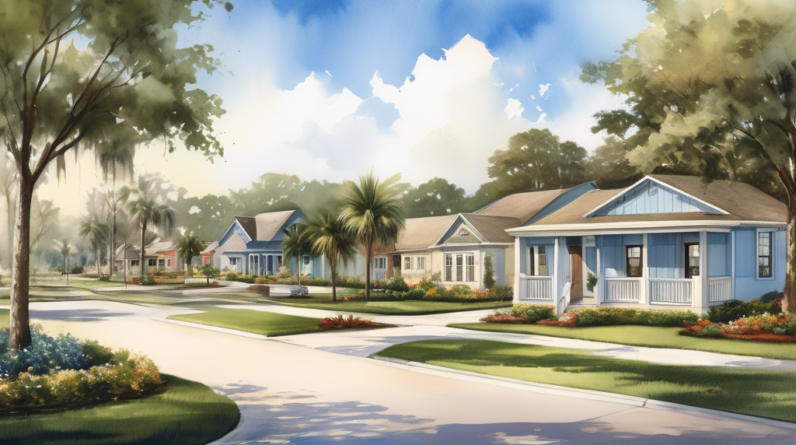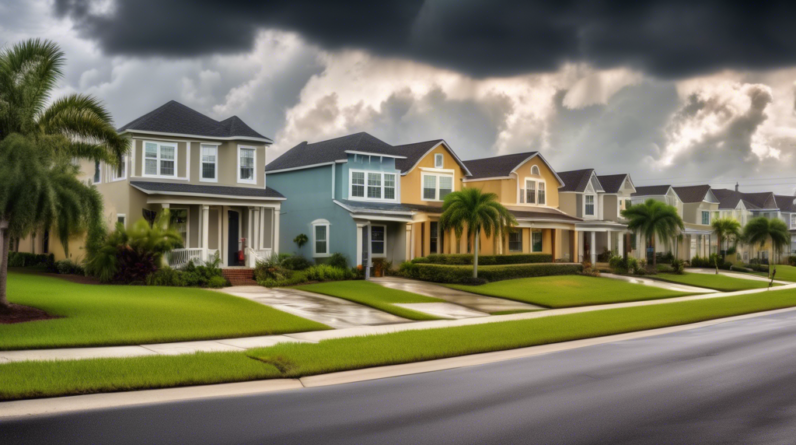Office Market Vacancy
In recent years, Central Florida has faced significant challenges in its office real estate market, notably in urban areas like Orlando. A high vacancy rate persists, fueled by transformative changes in work patterns and economic conditions. Jacksonville, for instance, highlights similar trends with downtown vacancy rates reaching as high as 25.1% for Northbank offices and 22.4% for Southbank buildings. Orlando’s office spaces are similarly impacted, indicating a broader regional issue.
Impact of Remote Work
The shift toward remote and hybrid work models has been monumental in reducing demand for traditional office space. Many companies have opted to downsize or vacate their office spaces altogether, contributing to the continuation of high vacancy rates. This evolution in work habits presents challenges, compelling both businesses and property owners to re-evaluate their spatial needs and investment strategies.
Rental Rates and Incentives
While there is a slow growth in face rental rates, the real story lies in the suite of incentives offered by landlords hoping to lure tenants. Common tactics include offering periods of free rent and tenant improvement allowances, making the space more appealing without significantly increasing posted rental rates. These financial breaks help offset costs for tenants, reflecting the competitive nature of a market with burgeoning vacancy rates.
Sublease Space
The sublease market has become a critical aspect of the office space equation. Currently, there is about 1 million square feet of sublease space available in central areas, with 617,000 square feet of this being vacant. This spike in sublease offerings suggests that many companies continue to hold leases on spaces they no longer fully utilize, further complicating the vacancy landscape.
Leasing Activity
Despite mixed leasing activity, there are signs of gradual recovery. For example, in the year 2023, 202 leases were signed, covering nearly 1.77 million square feet. However, renewals made up a considerable 37.4% of this activity, indicating that new interest in expanding spaces is limited. New leases and expansions tended to average around 7,103 square feet, reflecting moderate growth but not enough to significantly alter vacancy rates.
Construction Pipeline
The outlook for new office construction is bleak, with virtually no speculative office developments in the pipeline. The economic math currently doesn’t support such investments due to insufficient rental rate growth. Most construction efforts are focused on build-to-suit projects or developments driven by corporate owner/occupiers and medical facilities, illustrating a shift toward specialized demand areas.
Regional Variations
Suburban submarkets have shown greater resilience compared to central business districts. Suburban areas in cities similar to Orlando, like the Beaches and segments of the Southside of Jacksonville, enjoy lower vacancy rates, often in the single digits. These areas typically offer more flexibility and appeal, catering to varying tenant needs during this transitional period.
Economic and Market Outlook
Looking ahead, there is cautious optimism. Reports from experts like CBRE suggest that demand for office space may see an uptick in 2024, with projections indicating over 380,000 square feet of potential tenant interest. Nonetheless, the market remains under pressure from broader economic uncertainties, including inflation and fears of a looming recession. These factors continue to apply downward pressure on both developments and investments in office space.
In summary, Orlando’s office space dilemma is multifaceted, influenced by fluctuating work practices, economic anxieties, and shifting supply-demand dynamics. Navigating this landscape will require innovation, flexibility, and an ability to adapt to the changing needs of businesses in a post-pandemic world.







